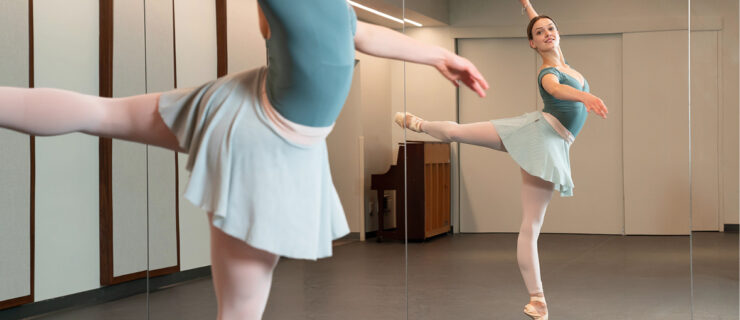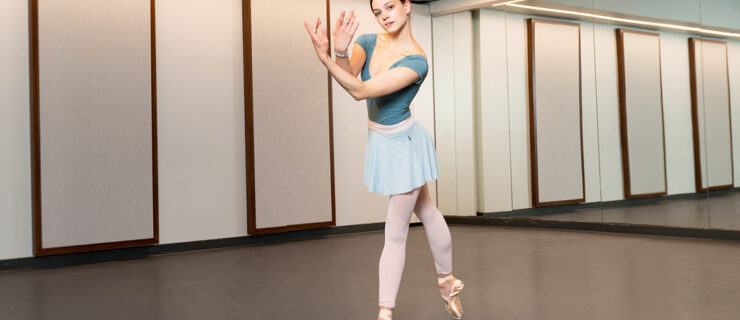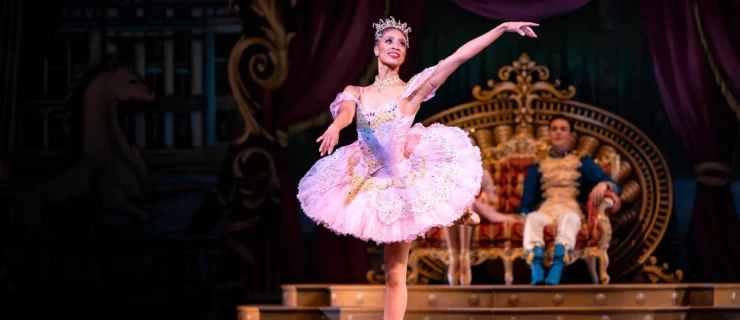Claudia Monja Is Fearlessly Making Her Mark at Nashville Ballet
When Nashville Ballet’s Claudia Monja was 7 years old, she saw a glimpse of her future. One day, at her home in Havana, Cuba, an uncle was watching a tape of the legendary dancer Alicia Alonso starring in Swan Lake. Monja, whose mother had enrolled her in ballet classes to ease her shyness, twirled along. “I said, ‘Mom, when I grow up, I want to be the same as her,’ ” Monja recounts. “I want to be a ballerina.”
Today, Monja’s sharp technique, sumptuous movement quality and affinity for the dramatic have brought her to prominence. Prior to joining Nashville in 2021, Monja had danced at Joburg Ballet in Johannesburg, South Africa, since 2012. While there, she was promoted to principal dancer in 2018, becoming the company’s first Black ballerina to achieve the top rank. She conquered leading roles in much of the classical canon at Joburg, including Giselle, Carmen and La Traviata. She is drawn to the challenge of unraveling strong characters’ complexity through physicality.
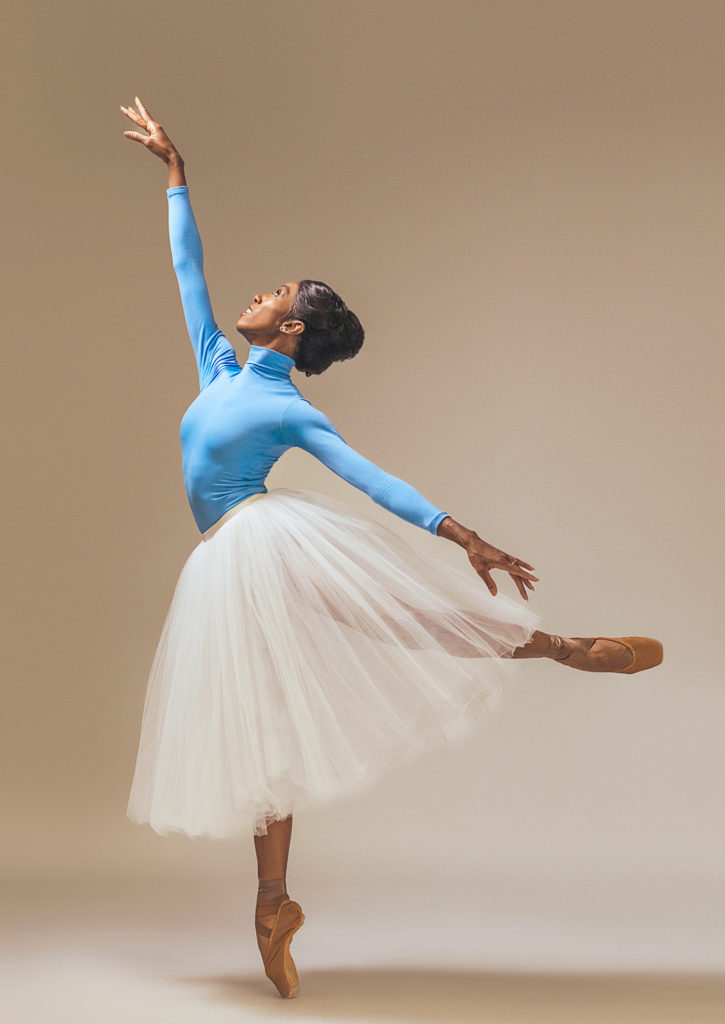
Despite having little contemporary experience, Monja immediately dove into Nashville Ballet’s eclectic repertoire. On day one, she began learning the principal role of Lucy in artistic director Paul Vasterling’s 2019 ballet Lucy Negro Redux, which explores the premise that Lucy, a Black woman and brothel owner, inspired William Shakespeare’s “Dark Lady” sonnets. In September 2022, Monja made her U.S. television debut as Lucy in PBS’ presentation of the piece, “Great Performances: Black Lucy and the Bard.” In it, Monja is arresting, commanding the stage with a bearing at once regal, smoldering and belying carefully shielded fragility.
“She’s an incredible talent,” says friend and fellow company member Nicolas Scheuer, who danced with Monja as Shakespeare’s Fair Youth in the production. The two had previously been paired in Vasterling’s staging of Firebird, which Monja also led. “In rehearsals, she goes above and beyond to help her partner,” Scheuer says.
“Claudia is one of the hardest workers I’ve ever met in my life,” says Vasterling. “She has become a ballet dancer who can do it all.”
A Budding Ballerina
Monja began taking both rhythmic gymnastics and ballet classes at age 3. “I was an only child,” she says. “I needed to be in a place where I could communicate with other children.”
At rhythmic gymnastics, “I was very good, darling,” she says, her natural charm shining through. But at age 8, after deciding to focus on ballet, she followed her teacher’s suggestion to audition for the Cuban National Ballet School—the feeder for the National Ballet of Cuba—and was accepted.
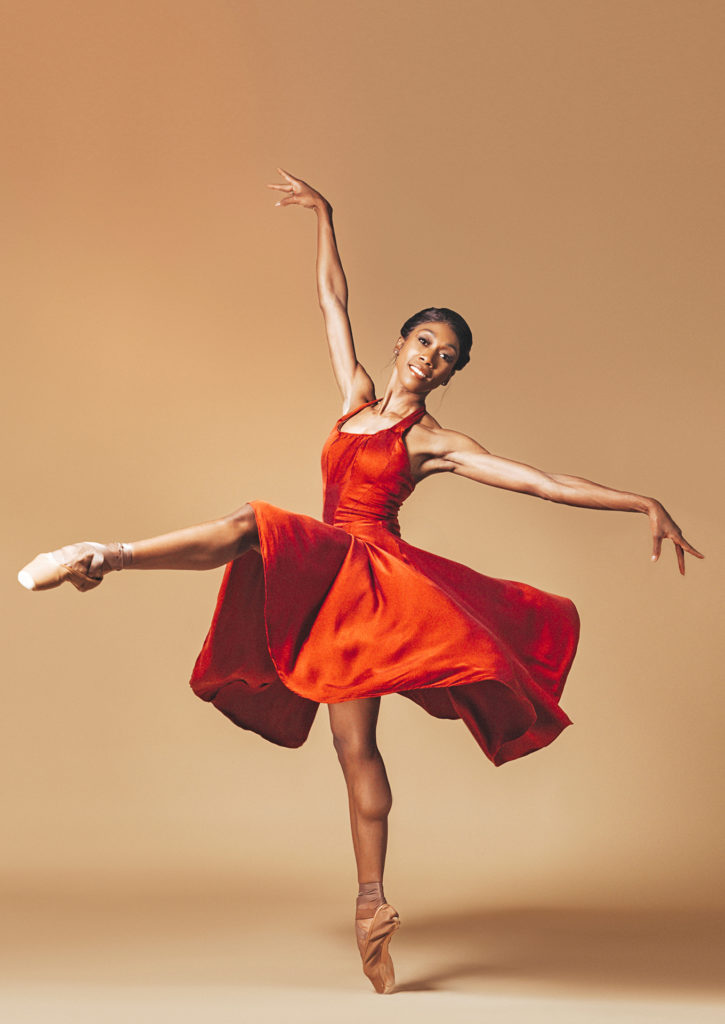
For eight years, Monja immersed herself in the school’s rigorous curriculum, including technique, repertoire, choreographic composition, music and French, along with traditional academics. But the art form that had opened her heart began to break it.
As one of few Black, lower-income students, Monja felt ostracized. “A lot of the other students wouldn’t talk to me because I came from a simple family,” she says. Some of her classmates and teachers told her she’d never become a professional ballet dancer. “In my first year at the school, I didn’t want to continue dancing because I felt so down.” With emotional support from her family, she persisted. She still considers them her greatest mentors.
In 2005, Monja graduated from the Cuban National Ballet School, subsequently spending three months in the National Ballet’s corps de ballet. There, she learned to work more independently and convey what she wanted through her body. “Seeing the other dancers and the amazing teachers, I was like a sponge,” she says. “I soaked in everything.”
A few months later, after her contract ended, she joined the corps of the Ballet de Camagüey and was promoted to soloist in 2009. “I was dancing a lot then,” she says, taking on roles such as Big Swans in Swan Lake, Myrtha in Giselle, and parts in neoclassical works by choreographer José Antonio Chávez, including El Beso de la Muerte, Ofelia and Engendro y Desequilibrio.
At Camagüey, she began attracting media attention for her skill, and for being a rare Black ballerina. Alicia Alonso invited her to give an encore performance of Chávez’s duet, Fatum, which Monja danced with fellow company member Mailin Castellón, at the International Ballet Festival of Havana in 2010. Monja recalls, “It was a time when people in Cuba started to see—‘Who is that girl?’ ”
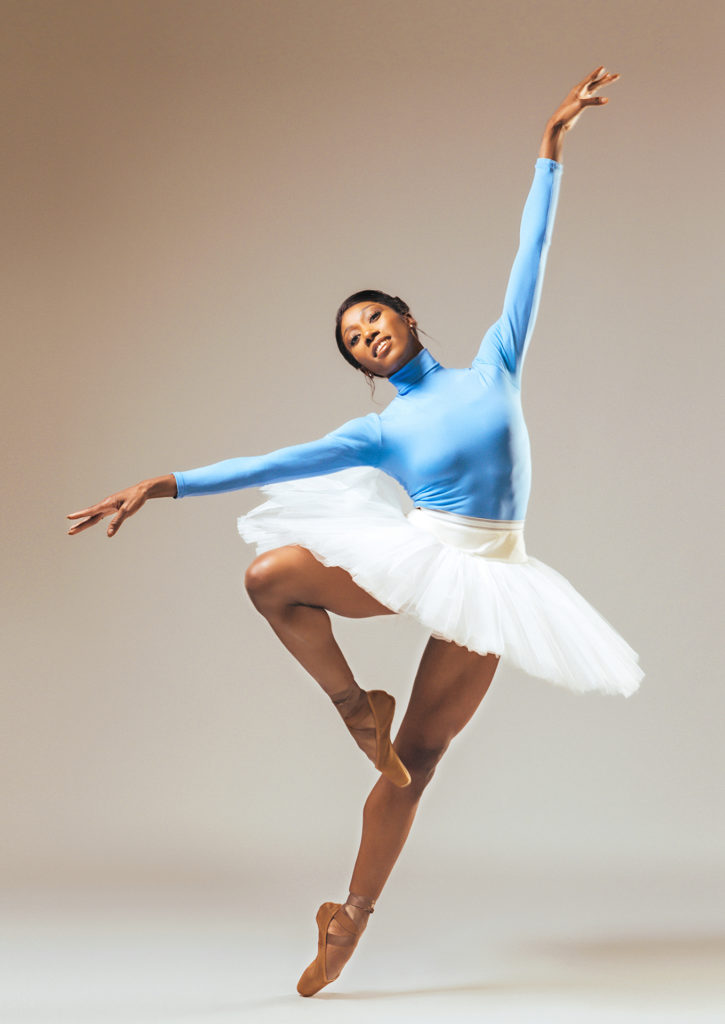
Making Leaps
When the Ballet de Camagüey danced in an anniversary event for Mzansi Productions (now Joburg Ballet), the South African company invited Monja to spend two months as a guest artist. There, she performed the roles of Mercedes, Queen of the Dryads and one of Kitri’s friends in Don Quixote. The company asked her to stay, and Monja, then 25, agreed. “Joburg gave me the opportunity to grow more as a classical dancer,” she says. “They shaped me a little bit. I had to be more like their style,” which was softer and less intense than her own.
Though a member of Joburg’s senior corps de ballet, Monja’s first role at her new home was Giselle. Next came Gamzatti in La Bayadère. “I started from the bottom again, but with my effort and dedication, I always had the opportunity to do soloist and principal roles, even [before I reached those ranks],” she says. She was promoted every two years, with her promotion to principal happening the night of her debut as Carmen. “Seeing the reactions to my performances and meeting amazing people who became my other family filled my heart with happiness.”
Then, after nearly a decade at Joburg, Monja felt she was no longer growing. “I thought, Maybe my ballet career is finished,” she says. She began shifting her focus to teaching, assisting in training Joburg Ballet School teachers in the Cuban method. When she saw a job listing for a School of Nashville Ballet director position on the website for Memoirs of Blacks in Ballet, Monja contacted MoBBallet’s founder, Theresa Ruth Howard.
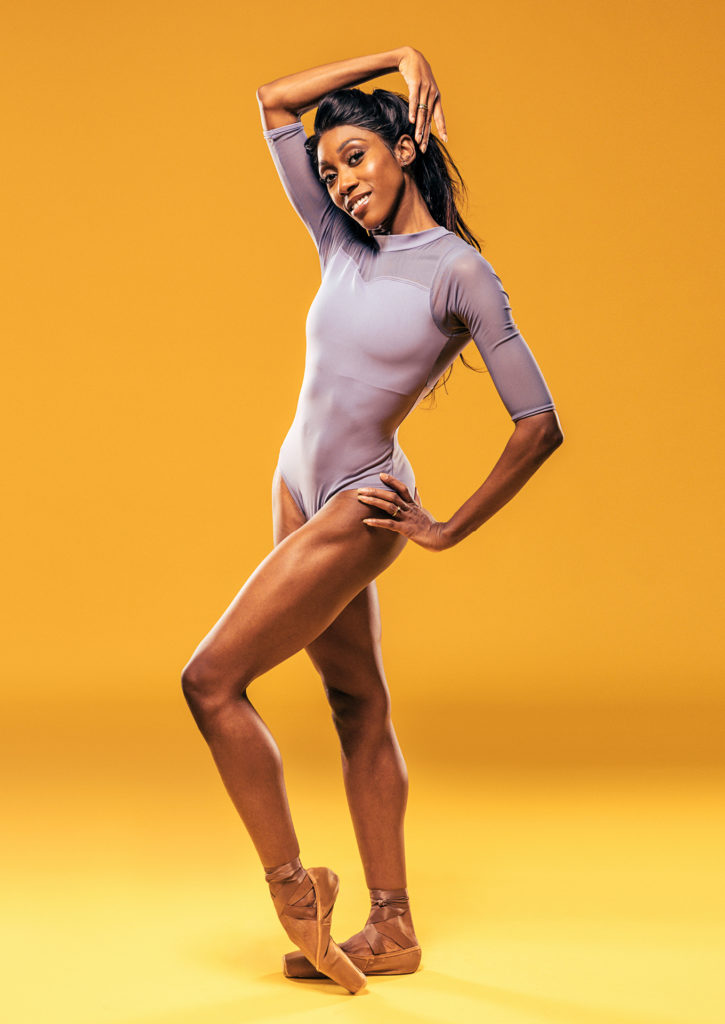
“I asked if she was still dancing, and she said no, she was looking for a change,” Howard says. Coincidentally, Vasterling had asked Howard to recommend a new star for Lucy Negro Redux after the retirement of its original Lucy, the former Nashville Ballet member Kayla Rowser Tazik. Howard connected him with Monja.
Vasterling watched Monja on video and offered her a place in the company. “Paul asked me, ‘Why are you deciding to be a teacher and not a ballet dancer?’ I was like, ‘Really? But I’m old,’ ” Monja says. She was impressed by videos of Nashville Ballet, and saw an opportunity to move beyond the classics. After ongoing conversations with Vasterling over Zoom, Monja accepted his offer.
Getting to Work
Once in Nashville, dancing to spoken word in Lucy Negro Redux presented a new challenge. The piece is narrated by Caroline Randall Williams, author of the poetry book Lucy Negro, Redux, on which the ballet is based. “It was difficult for me, because you have to listen to and understand the word as you do the step,” Monja says. A native Spanish speaker, she mentally translated each word into her mother tongue, and read Williams’ book to study English and develop her characterization.
“When I’ve worked on something and know it well, I try not to be too shy,” Monja says. “Maybe that’s why I’m different when I’m performing: because I feel more perfect.”
Though Monja prepares meticulously, Vasterling notes her spontaneity as a performer, which, he says, “is exciting to watch. She really gets fed by having a live audience, I believe.”
Howard, who worked with Monja on the all-Black ballet project Reframing the Narrative, at The Kennedy Center last June, describes her dancing as a beautiful, slow burn. “The way she uses her eyes, the way she connects with her partners, that really happens onstage,” she says. In Donald Byrd’s From Other Suns, part of the event’s programming, Monja built on her newly honed contemporary skills.
“The tools he uses to generate movement are very postmodern,” Howard says of Byrd’s choreography. “It’s very mathematical, and the dancer has to really think. To watch Claudia’s acumen with understanding the form, to be able to break it down or reconstruct it, was really nice.”
On the Horizon
Though Vasterling will retire at the end of this season, he sees a bright future for Monja at the company. In February, she will dance a role inspired by Ella Sheppard Moore—one of the original Fisk Jubilee Singers—in the new ballet Anthology, choreographed by Vasterling, Mollie Sansone, Shabaz Ujima, Sidra Bell and Windship Boyd. In April, Monja will perform the lead in Cathy Marston’s Snowblind.
Long-term, Monja wants to teach again. She also loves cooking, and wants to open a Cuban restaurant someday.

Whether in a tutu or a toque, Monja is poised to make an impact. “Sometimes the little ballerinas from the school come and talk with her when we’re at the studio together,” Scheuer says. “She’s changing people’s lives, not because she’s trying, but just by being herself.”
Monja wants young dancers to be confident and focused, no matter what. “Don’t feel afraid because of who you are, or what you don’t have,” she says. “I haven’t had the easiest career path, but I feel blessed, because sooner or later, people see what I do.”
Future Pointe digital cover stories will be available exclusively on Pointe+.


